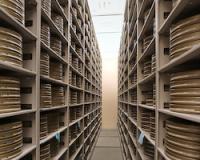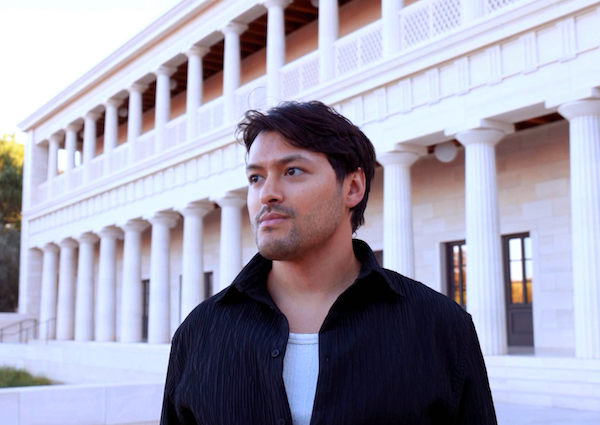
Esteban Arellano
Guest writer Esteban Arellano is an emerging multidisciplinary artist and designer who completed the UCLA Film & Television Archive’s inaugural Artist-in-Residence Program in 2024. Here, he discusses SURROUND SOUND, a project developed during the residency.
Arellano’s practice encompasses a wide range of mediums, including video, technology, photography, performance, essay and sculpture. His work has been presented at institutions such as Harvard University and The School for Poetic Computation. He earned a B.A. in History and Literature from Harvard University. While a student, he was the publisher of The Harvard Advocate Literary and Arts Magazine. Visit Arellano’s website to learn more about his work.
This program was made possible through support from the Golden Globe Foundation.
In my work, I’ve always been drawn to the quiet frequencies that surround us — the faint hums, the echoes, the static that fills the spaces between the sharpness of what is seen and heard. These are the spaces where stories linger, resisting capture, and where I, too, often feel most at home.
Last year, as the UCLA Film & Television Archive’s Artist-in-Residence, I had the rare privilege of listening to an archive and a city at once. The archive — a vast repository of Los Angeles’ televised history — is full of spliced reels and unpolished fragments. It’s an archive of what was left behind: discarded moments of joy, grief, protest and performance that never made it to air but still contain traces of something vital. Through this residency, I came face-to-face with these incomplete stories and began to ask questions about what it means to belong in a place that may not have seen you at all.
For me, this is personal. My father immigrated from Mexico to Los Angeles at the same time that many of these reels were recorded. In some ways, this project became an attempt to understand him better, to retrace the city he encountered in a time when KTLA cameras were capturing waves of racial and economic strife. In other ways, it was a way of seeing myself reflected in the archive, or perhaps of confronting my own absence in it.
But archives, as we know, are not neutral. They are shaped by what is deemed worthy of preservation and by whom. The footage I encountered is no exception — it is full of gaps and silences, omissions of lives and histories that refuse to fit neatly into the broadcast frame.
SURROUND SOUND was born from these silences, these leftovers. It is a machine that listens, searches and rearranges. Using neural networks and a database of archival video, audio and metadata, it weaves connections between moments — both real and imagined — that might otherwise never meet.
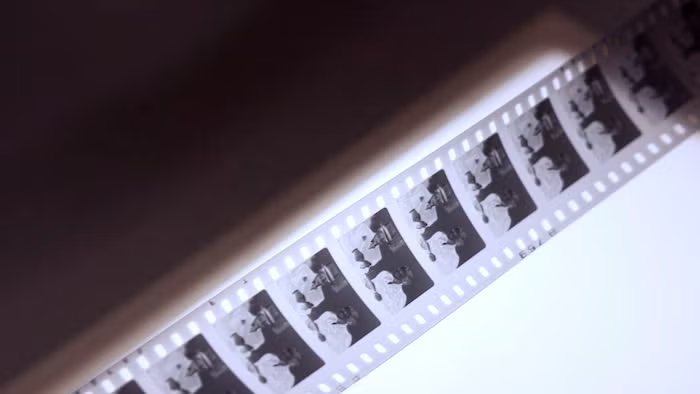
The Process: Searching for What’s Not There
The residency began with a single question: What does it mean to search for yourself in an archive that barely sees you? Over the course of this year, I pored over the reels in the UCLA archive, encountering footage of labor strikes, student protests, eviction blockades and everyday life in communities across East and South Central Los Angeles. What I found were not just images but worlds — fragments of collective action, moments of resistance and survival that resonated deeply with the city we live in now.
But I also found limits. As someone who is both queer and Brown, I couldn’t help but notice how these reels rarely documented lives like mine or my father’s. Instead, they offered glimpses — blurred, partial and mediated by the gaze of local television news. This is where thinkers like Trinh T. Minh-ha, Saidiya Hartman and John Akomfrah became invaluable guides, helping me understand the archive not as a repository of truths but as a site of gaps and erasures. To work with the archive, then, is not to uncover what is missing but to gesture toward the void, to speak nearby rather than for.
From these theoretical foundations, I began to build SURROUND SOUND — a machine that reflects my own encounters with the archive. Using Python and tools like TouchDesigner, I created a system that could search for patterns in the archive’s database of videos, frame embeddings and audio. These connections weren’t predetermined but emerged organically, like threads woven between disparate moments of time and space. Sometimes these connections hummed in harmony, other times, they glitched or fell apart entirely. I embraced these interruptions as part of the project’s ethos: the archive, like memory, resists coherence.
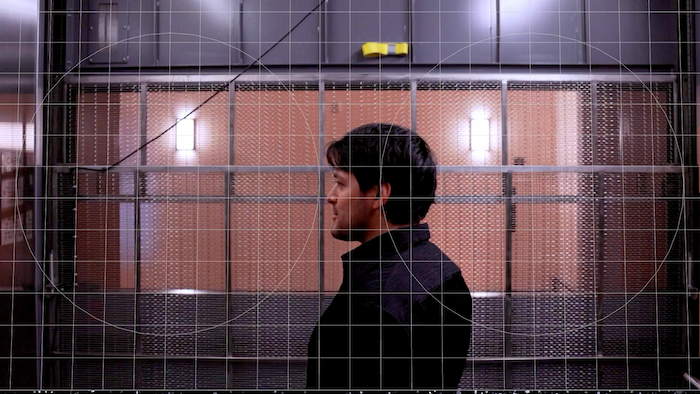
The Project: What SURROUND SOUND Does
SURROUND SOUND is a machine for storytelling, but not in the conventional sense. It’s not here to provide a linear narrative or a definitive history. Instead, it’s an experiment in listening — an exploration of how fragments, gaps and noise can shape a new kind of commons.
The project takes the form of an audiovisual installation. Videos from the archive play in seemingly random sequences, but behind the scenes, the machine is working to trace hidden connections. A protest against police brutality in the 1970s might fade into a student rally, their chants overlapping and blending into a single call for justice. Over time, these sequences begin to break down. The cuts between clips become jagged, the visuals distort, and the sound builds into a cacophony that overwhelms the screen. This is intentional. It’s a reminder that no matter how much we search, the archive resists being neatly organized or controlled
.
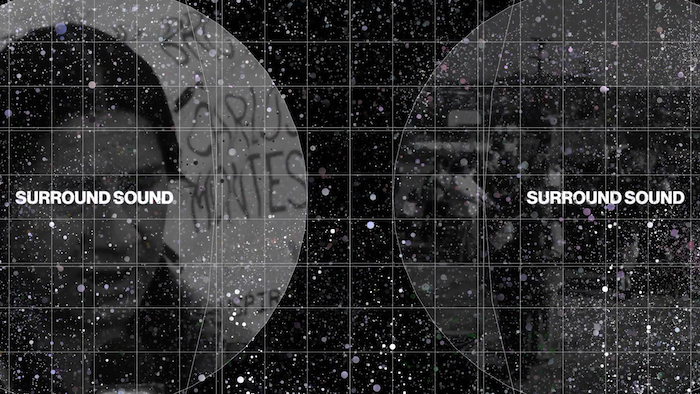
What Comes Next: Building Community
While SURROUND SOUND begins as a deeply personal exploration, its next evolution is a collective journey. In 2025, this project will expand into a series of IRL and digital activations across Los Angeles, designed to build meaningful relationships with communities working on the ground today. By lingering in the archives of the past, we can uncover pathways to inform the culture, labor, art and survival shaping the city’s present and future.
These activations will include community workshops where raw archival footage and interactive installations spark dialogue about Los Angeles’ layered histories. These gatherings will be opportunities to collaborate with cultural organizers, storytellers and residents, weaving new oral histories, video portraits and creative works into the SURROUND SOUND ecosystem.
The initiative will culminate in a capstone event: a public installation where the machine, the archive and the community converge. This will be a space to see and hear not only the echoes of the past but also one another, building connections from the noise and silence left behind. Together, we’ll create a resonance that belongs to all of us.
Reflections: A New Surround Sound
This residency has been a turning point in my practice, not just as an artist but as a listener. It has taught me that the archive is not a place of certainty but of possibility. It has reminded me that the stories that matter most are often the ones that refuse to fit neatly into history’s frame.
With SURROUND SOUND, I’m not trying to fix the archive or fill its gaps. Instead, I’m letting it speak — to hum, glitch and reverberate. Because in the noise, there’s always something waiting to be heard.
To everyone who has supported me throughout this residency, thank you. And to the communities of Los Angeles: this is just the beginning.
Learn more and follow along at surroundsoundla.com.






 Mobile Navigation
Mobile Navigation
